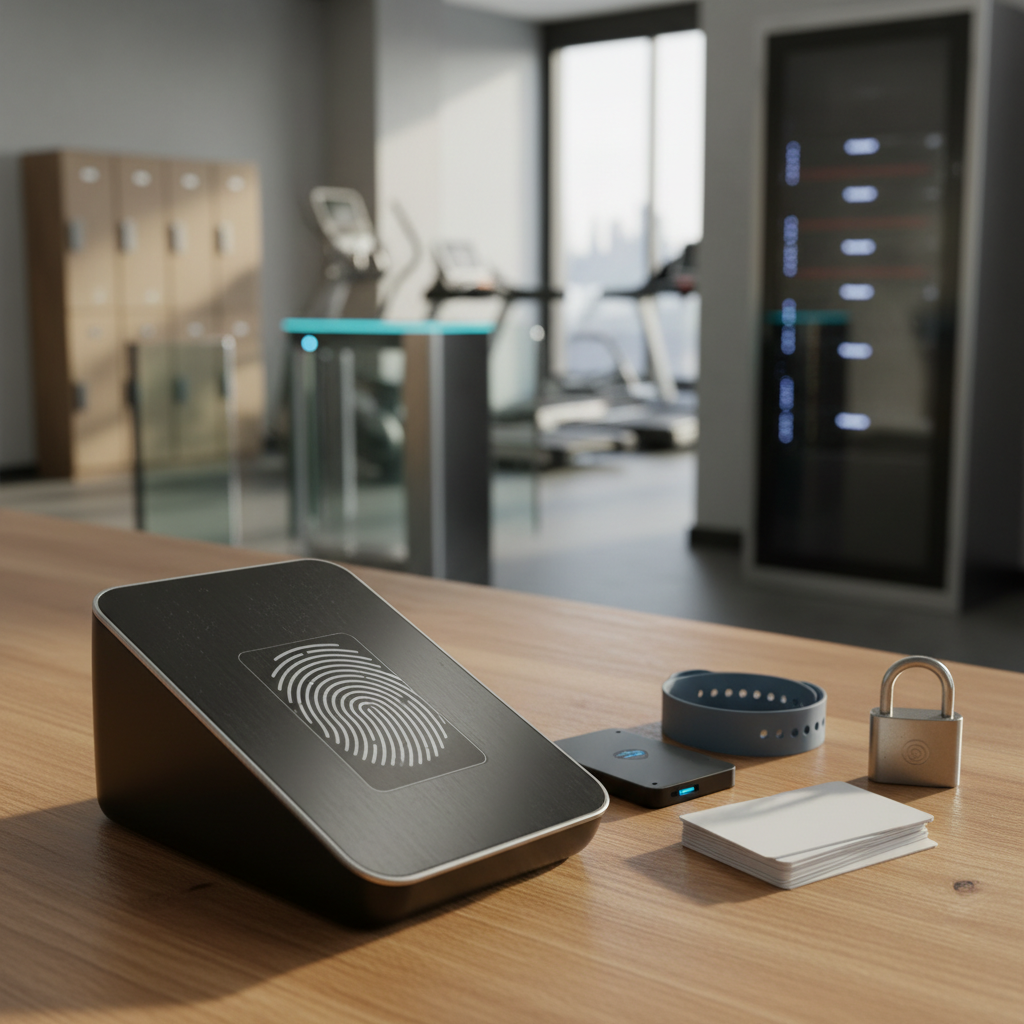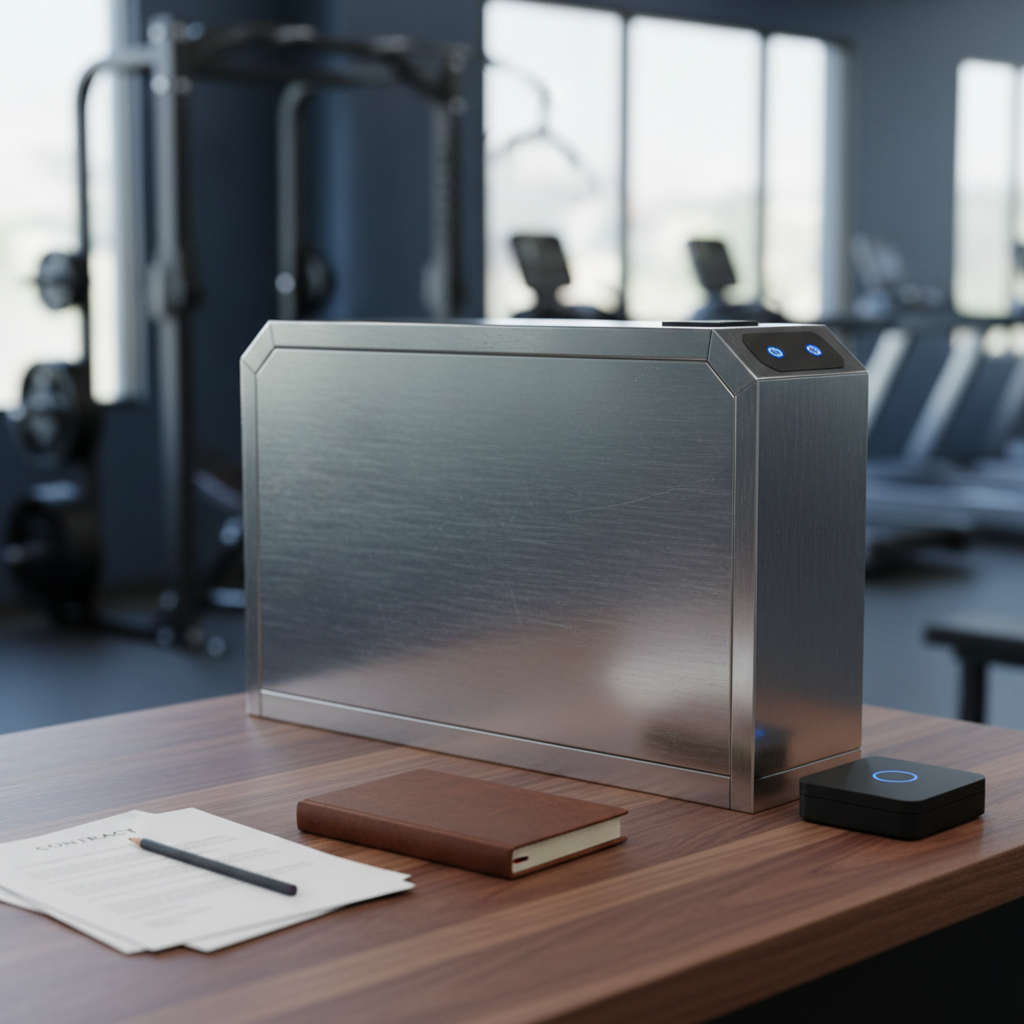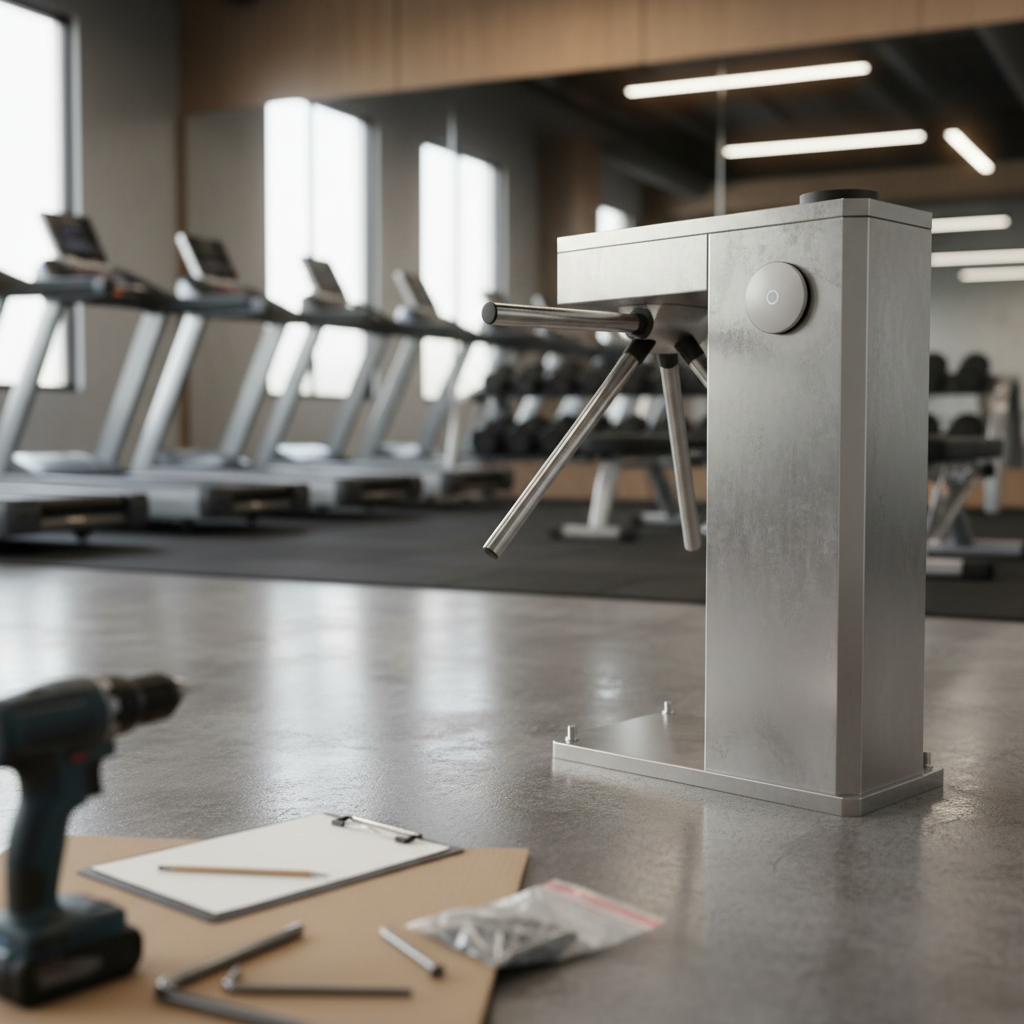Gym Entrance Gate Capabilities and Limitations: Understanding Anti-Tailgating Technology
When investing in access control gates for your gym, understanding their capabilities and limitations is essential. While modern gates provide excellent security, they're not perfect barriers against all forms of unauthorized access. Let's examine how these systems work and where they face challenges.
The Two Main Types of Glass Wing Gates
Glass wing gates fall into two primary categories, each with distinct operating mechanisms and applications.
Flap gates feature wings that retract inward in a guillotine-like motion. These are commonly seen in metro systems worldwide. The wings pull back into the housing to allow passage, then extend back across the opening after the authorized person passes through.
Speed gates operate differently, with wings that open outward in the direction of travel, similar to saloon doors. These are frequently used in airports and premium office buildings. The wings swing open ahead of the user, then close behind them after passage.
Both types serve the same fundamental purpose - controlling access, but their mechanical differences create distinct performance characteristics, particularly regarding their ability to prevent tailgating.
The Persistent Challenge of Tailgating
Tailgating has always been a significant challenge for glass wing gates, regardless of type. Tailgating occurs when an unauthorized person follows closely behind an authorized person, passing through the gate before it closes.
Manufacturers have historically differentiated their products based on sensor technology. Each manufacturer has attempted to solve the optimal sensor placement and logic to close the wings as quickly as possible after a person passes. However, no manufacturer has achieved perfection in this regard.
This isn't due to poor engineering or lack of effort. The fundamental limitation is that sensor technology itself simply isn't capable of perfectly detecting every tailgating attempt under all circumstances.
How Infrared Sensor Technology Works
Most turnstiles use infrared sensors as their primary detection method. These sensors operate through a simple but effective principle.
An emitter sends infrared light, and a receiver detects it. The emitter and receiver can be located on the same side of the entry gate or on opposite sides (mounted in different gate bodies). The infrared beam remains continuously connected until an obstacle blocks it, breaking the connection.
This beam interruption and subsequent reconnection provide the data that sensor technology and its logic use to operate the gate.
For the sensor to detect two separate people, there must be physical space between them. Otherwise, the sensor cannot distinguish them as two distinct individuals. The sensor simply sees one continuous beam interruption.
The Physical Limitations of Detection
A perfect example of sensor limitation is piggyback passage, where one person carries another on their back. Even the world's best sensors cannot detect that two people are passing through in this configuration because there's no separation to break and reconnect the beam.
The same problem occurs when two people walk very close together. The difference between good and mediocre turnstiles lies in the distance required between two people for the anti-tailgating feature to function properly—the longer the required distance, the worse the performance.
Beyond Sensors: Wing Speed and Safety
Anti-tailgating sensor logic isn't the only variable to consider. Modern turnstile technology allows for very fast opening and closing times. The wings themselves are often quite heavy to provide durability and security.
This combination means that fast-moving wings carry significant force. If someone gets caught between closing wings, the experience is often quite unpleasant and potentially injurious.
The Anti-Pinch Safety Sensor
For this reason, all gate models, both flap gates and speed gates, incorporate anti-pinch sensors. These sensors ensure that wings don't close on a person or object standing between them. This is a critical safety feature that prevents injuries.
Unfortunately, this safety feature creates a significant side effect: the anti-pinch sensor weakens anti-tailgating protection in several ways.
In flap gates, a person can deliberately stand between the wings, keeping the anti-pinch sensor activated. As long as this sensor remains covered, the gate won't close, allowing any number of other people to pass through behind the person blocking the sensor.
Speed gates face the same abuse potential, but they have an additional significant weakness related to their opening mechanism.
The Speed Gate Closing Delay Problem
As mentioned, speed gate wings open in the direction of travel, and after the person passes, the wings close. But the critical question is: at what point do the wings begin closing?
The answer is that closing can only begin once the person has passed beyond the open wings. If the wings began closing earlier, they would close on the person still passing through.
Let's work through a specific example. Consider a speed gate with a 900mm passage width. The wings are approximately 450mm long (upward rounded). The closing sensor can only be positioned at this point or slightly beyond it.
To prevent the wings from closing on the authorized person, the sensor logic must work as follows: the wings begin closing when the closing sensor beam first breaks and then reconnects. First the person interrupts the beam, then they clear it, and when it reconnects, the closing sequence begins.
Now add a tailgating person to this scenario. Theoretically, the distance between the two people must be at least 450mm (from the anti-pinch sensor) to the sensor beyond the wings. In practice, even more distance is required.
This means that even the best speed gate can only prevent tailgating when there's more than half a meter of separation between people. This is already a significant gap that makes enforcement difficult.
The Anti-Pinch Bypass Solution
However, this problem can be circumvented. The anti-pinch sensor can be disabled. When disabled, the turnstile closes immediately whenever the person ahead passes the sensor after the wings. The wings will then close on anyone following behind, regardless of how far back they are.
While disabling the anti-pinch sensor is legal in Europe, several requirements must be met to do so legally and safely.
European Regulatory Requirements
The Machinery Directive 2006/42/EC (which will be replaced by Machinery Regulation 2023/1230 starting in 2027) requires that machines and automated equipment must not create crushing, squashing, or pinching hazards. Manufacturers must design safety measures including:
- Obstacle detection
- Force limitation
- Emergency stop
- Safety distances
Therefore, automatic doors and access gates must also comply with EN 16005 and EN 17352 standards, which define a 400 N force limit.
This "no crushing" prohibition is based on these regulatory requirements and standards.
What 400 Newtons of Force Means
The 400 Newton force limit means, in practical terms, that the device can push someone but cannot cause bruising or injury. It's still a very unpleasant and startling amount of force, but it remains within safe limits.
The 400 N force can be measured with testing equipment. In gates, this force level can be adjusted through opening and closing speed settings.
Higher wings weigh more and therefore must move slower than lower wings to not surpass the 400 N force limit. This is a simple physics relationship between mass, velocity, and force.
Official testing methods must be followed, after which new CE markings must be created to certify compliance.
Practical Trade-offs
A side effect of this approach is that you can no longer have turnstiles that open in 0.1 seconds, it creates too much force. However, such extreme speed is rarely necessary in gym environments anyway.
Flap Gates vs. Speed Gates for Anti-Tailgating
The same 400 N force rule applies to flap gates. In summary, flap gates generally perform better than speed gates for anti-tailgating, especially when the anti-pinch sensor remains enabled.
The reason is mechanical: flap gates retract inward, creating less opportunity for the closing delay problem that affects speed gates. The sensor can be positioned more effectively, reducing the gap that tailgaters can exploit.
However, when anti-pinch sensors are disabled on both types, speed gates can perform nearly as well as flap gates, since both will close immediately after the authorized person clears the sensor beam.
Modern Camera-Based Detection
Newer technology now includes camera systems that can identify two people simultaneously in the monitoring area. These systems either prevent the gate from opening or force immediate closing when multiple people are detected.
These camera technologies are more accurate than traditional IR sensors in many scenarios. They use computer vision and sometimes AI to distinguish between one person with a backpack and two people walking closely together.
However, these systems also have their limitations. They can struggle with:
- Simple human behaviour, might be hard to get perfect automation
- Reaction times, if over 0,1 second the logic starts to fail
- Camera angles
- False anti-tailgating closes
This makes camera-based detection the second-best tailgating prevention method compared to turnstiles with disabled anti-pinch sensors that close with 400 N force immediately after passage.
Choosing the Right Configuration for Your Gym
When selecting gate for your gym, consider these factors:
Your risk tolerance: How critical is absolute tailgating prevention versus user comfort? High-security facilities might prioritize prevention; premium gyms might prioritize comfort.
Your member demographics: Facilities with elderly members or children should carefully consider force settings. Facilities with primarily young, able-bodied adults can potentially use more aggressive closing.
Your physical space: Flap gates typically require less space and perform better with anti-pinch sensors enabled. Speed gates need more clearance but look more premium.
Your regulatory environment: Ensure your chosen configuration complies with local safety standards while achieving your security goals.
Your budget: Camera-enhanced systems cost more than sensor-only systems. Determine whether the improved detection justifies the additional investment.
Implementation Recommendations
If you decide to implement turnstiles with disabled anti-pinch sensors to maximize anti-tailgating protection:
Conduct proper testing: Have the turnstile tested and certified to meet the 400 N force limit. Maintain documentation of this testing.
Update CE marking: Ensure new CE markings are created reflecting the modified configuration and force testing results.
Adjust speeds appropriately: Work with your supplier to calibrate opening and closing speeds to achieve both good user experience and the 400 N limit.
Provide clear signage: Warn users that turnstiles close immediately after passage. Clear communication reduces complaints and improves compliance.
Monitor initial implementation: Watch how members interact with the new settings. Be prepared to make minor adjustments based on real-world usage patterns.
Train staff: Ensure your team understands how the system works and can explain it to confused or concerned members.
Combining Technologies for Best Results
The most effective anti-tailgating approach often combines multiple technologies:
Physical barriers (turnstiles) as the primary prevention method, with either anti-pinch disabled and 400 N force limits, or anti-pinch enabled with shorter wings for faster closing.
Camera systems as secondary detection, particularly effective at catching unusual tailgating methods like piggyback passage that sensors miss entirely.
Access control integration that logs every turnstile passage and flags anomalies where a single credential authorization results in multiple passages detected.
Staff monitoring during peak hours when tailgating attempts are most likely, with cameras providing video evidence for enforcement actions.
This layered approach addresses the limitations of each individual technology, creating comprehensive protection against unauthorized access.
Understanding the Limitations
No turnstile system is 100% perfect. Even with disabled anti-pinch sensors and camera systems, determined individuals can sometimes find ways through:
- Credential sharing where the unauthorized person has the same body type and appearance as the authorized member
- Timing exploits where someone learns the exact sensor positions and closing delays
- Physical manipulation like holding wings open or blocking sensors
- Social engineering where someone convinces a member to let them through
These edge cases are rare but worth acknowledging. The goal isn't absolute perfection but rather preventing the vast majority (95%+) of casual unauthorized access attempts.
Making the Right Decision
Choosing the right turnstile configuration for your gym requires balancing security needs, member experience, regulatory compliance, and budget constraints.
For most gyms, the optimal configuration is:
- Flap gates or speed gates with anti-pinch sensors disabled
- Properly tested and certified to 400 N force limits
- Enhanced with camera-based detection systems
- Integrated with access control for comprehensive logging
- Supported by clear member communication about the system
This combination provides excellent anti-tailgating protection while maintaining legal compliance and reasonable user comfort.
Understanding the capabilities and limitations of turnstile technology helps you make informed decisions and set realistic expectations. While modern turnstiles are highly effective security tools, knowing where they can be exploited allows you to implement additional measures that address those specific vulnerabilities.
The investment in quality turnstiles with proper configuration pays for itself through prevented unauthorized access, improved member satisfaction, and reduced security risks. Choose your system wisely, configure it appropriately, and support it with complementary technologies for the best overall results.



